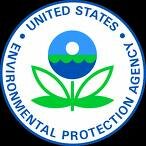Abundant hydrogen is available on the island of Oahu to power a ramp up of fuel cell vehicles through a General Motors collaboration with The Gas Company (TGC), Hawaii’s major gas energy provider. TGC produces hydrogen along with synthetic natural gas and delivers it in its utility gas stream, with more than 5 percent hydrogen content today. Through a proprietary separation process, TGC plans to tap into its 1,000-mile utility pipeline system at key locations and separate the hydrogen for use by local fueling stations for fuel cell vehicles.
“This is the type of enabler that a hydrogen transportation infrastructure needs because it addresses both the source of the hydrogen and a feasible way to deliver it for fuel cell vehicle use,” said Charles Freese, executive director of GM Global Fuel Cell Activities. “The Hawaii infrastructure could eventually support tens of thousands of fuel cell vehicles.
“Hawaii is uniquely positioned and motivated to make hydrogen-powered fuel cell transportation a reality because it depends on imported petroleum for 90 percent of its energy,” he said.
The state is committed to reducing petroleum use by 70 percent through a combination of renewable energy resources, conservation and efficiency. The use of hydrogen as a transportation fuel could be a key contributor.
“We have been delivering as much as 12 percent hydrogen made from renewable sources to our gas customers over the last two to three years and expect we can deliver even greater quantities of hydrogen as demand increases,” said Jeffrey Kissel, president and CEO of TGC. “By delivering hydrogen through our existing infrastructure as vehicle fuel wherever we have gas, The Gas Company expands its key role of supporting Hawaii’s clean energy future.”
Depending how the pricing for the hydrogen is set, it could be available at the equivalent price of gasoline or less.
GM, which has invested more than $1.5 billion in fuel cell transportation in the last 15 years, is developing a production-intent fuel cell system that could be ready for commercialization in 2015. Current Chevrolet Fuel Cell vehicles are part of Project Driveway, the world’s largest demonstration of fuel cell vehicles, which has amassed nearly 1.4 million miles of real-world driving by thousands of people since 2007.
U.S. Senator Dan Inouye, D-Hawaii, said he supports the pilot project. “My small role was one of introduction between these two companies, not that many months ago, which resulted in this business announcement today,” Inouye said. “It is an important step forward in the establishment of a hydrogen transportation infrastructure upon which new fleets, both military and civilian, can be tested and utilized. I am committed to support the resourcing of this endeavor. “Every step to reduce our dependency on foreign oil is a move forward,” he said.
The GM-TGC collaboration is the leading edge of a broad consortium of federal and state, non-profit and education organizations that is forming to develop a Hawaii Hydrogen Initiative as part of an integrated energy solution for Hawaii’s future.



















Great site. A lot of useful information here. I’m sending it to some friends!